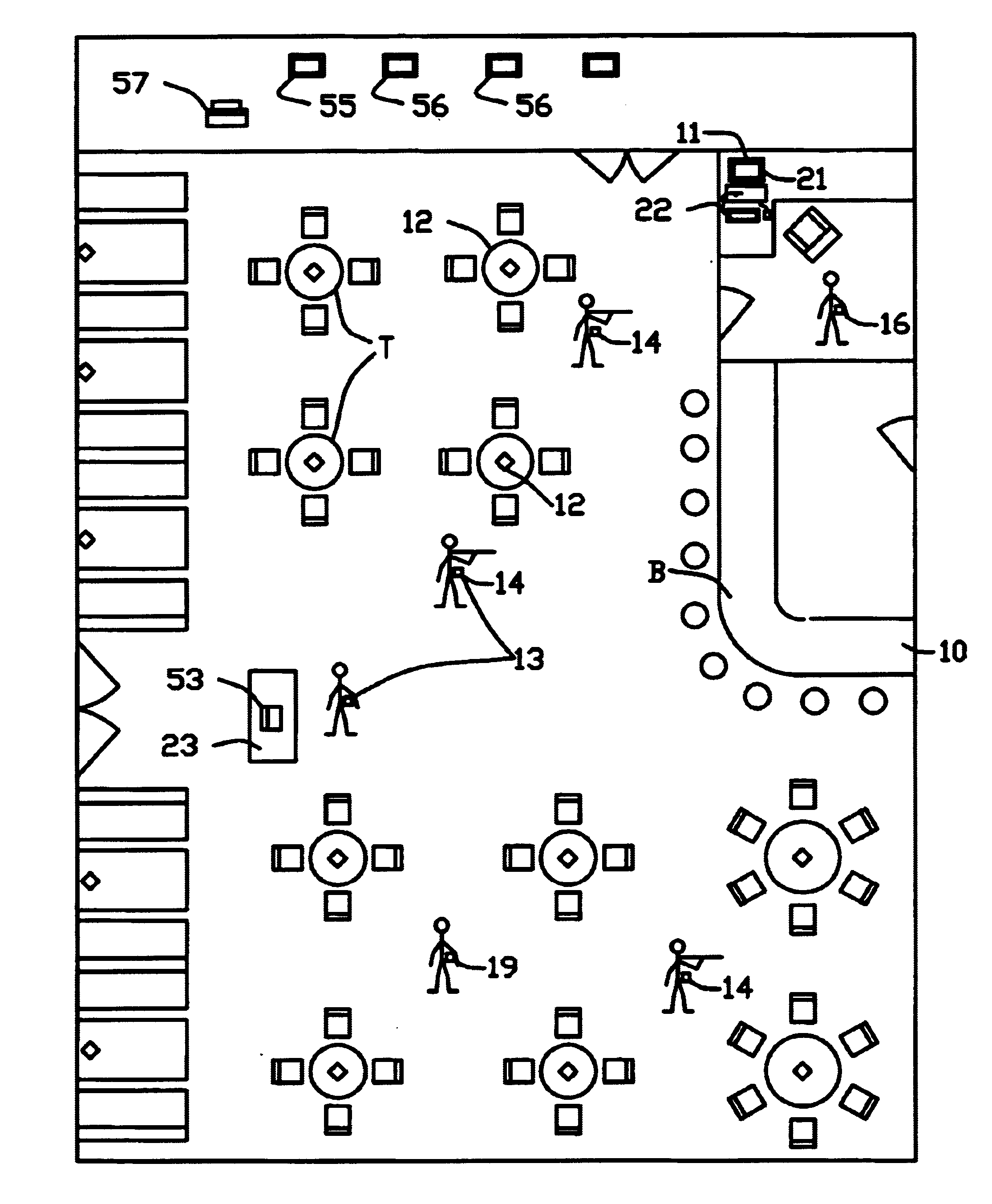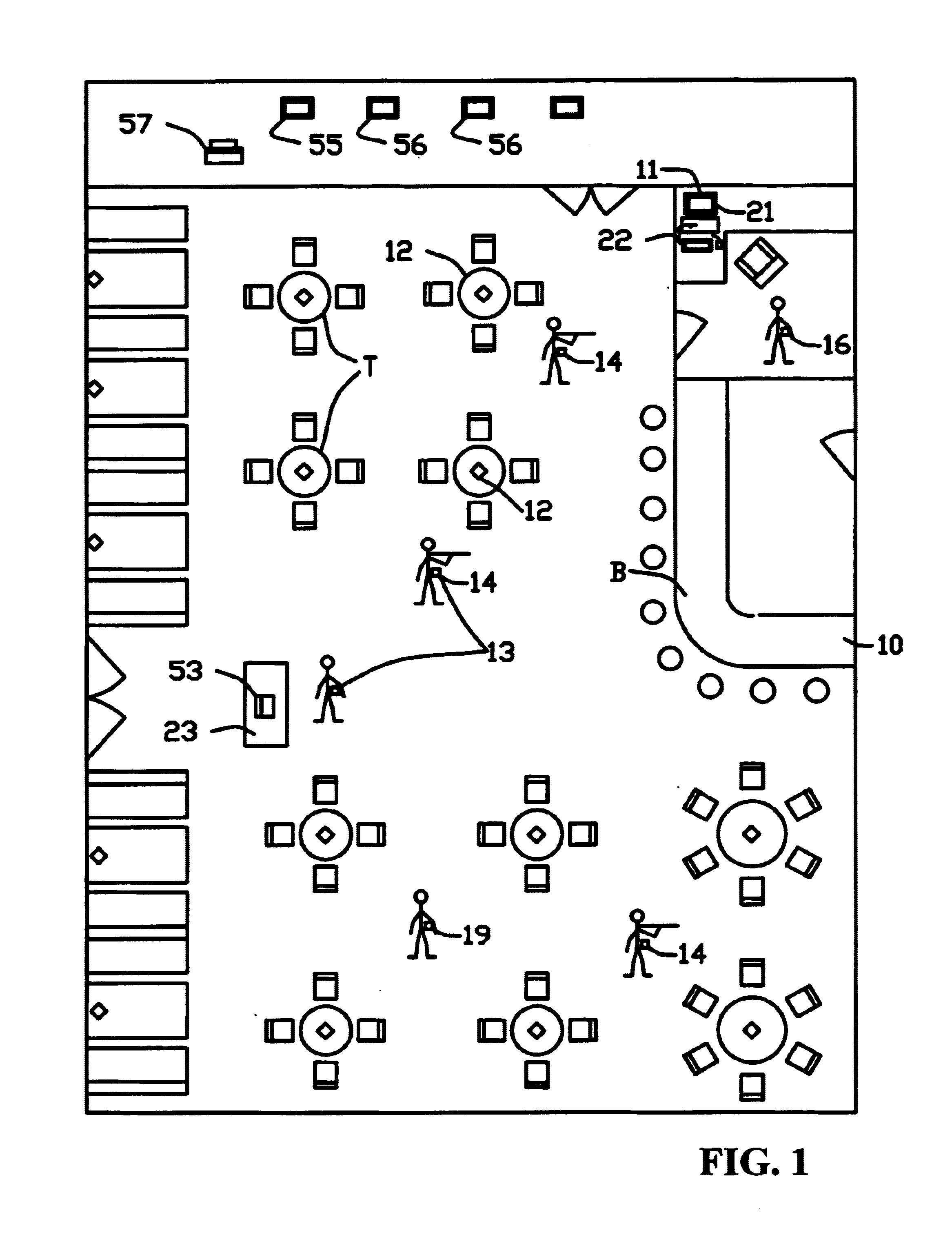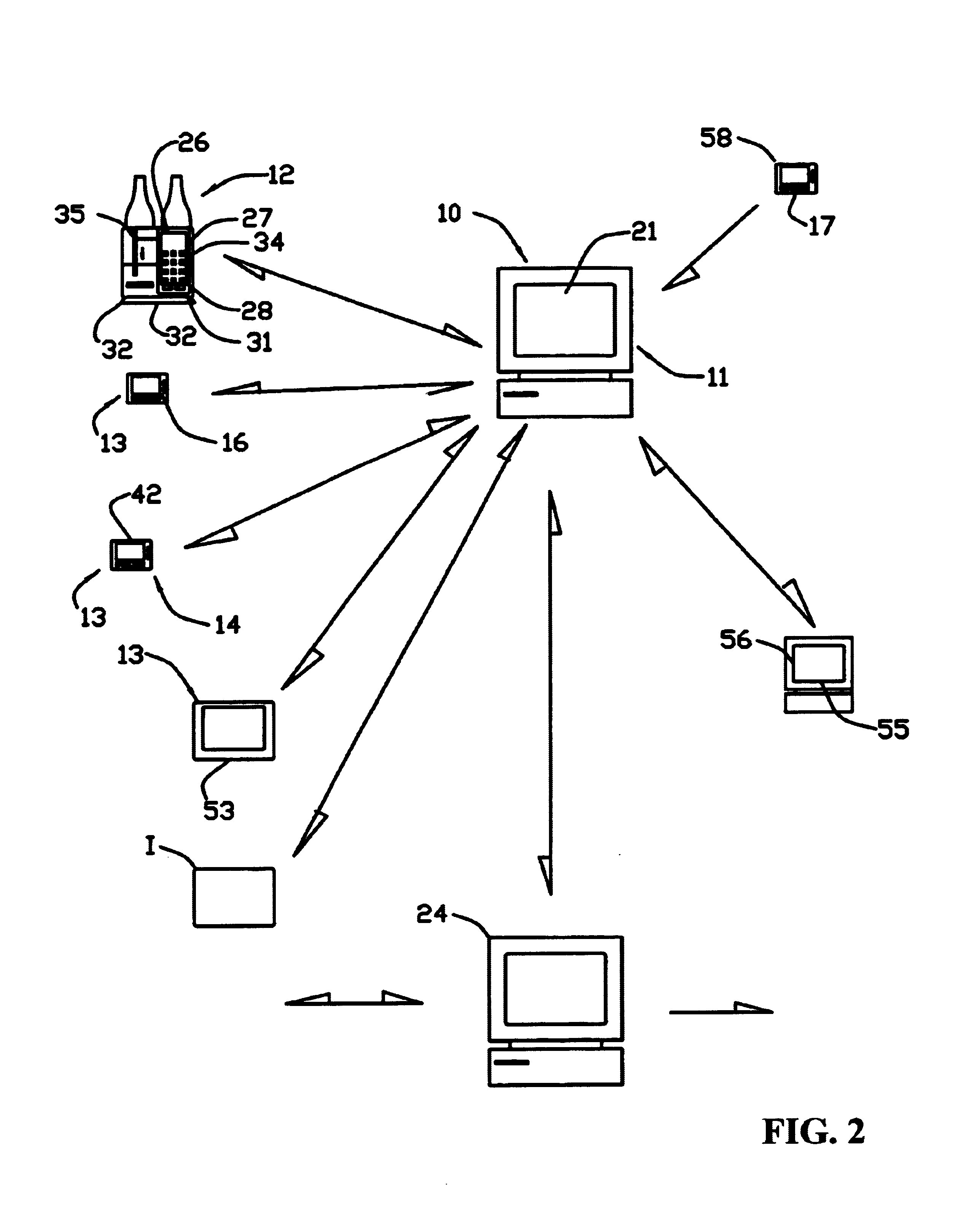Computer integrated communication system for restaurants
a technology of communication system and restaurant, applied in the field of communication system, can solve the problems of poor restaurant reputation, loss of business, patrons' inability to quickly and easily communicate with waiters/waitresses or managers, etc., and achieve the effect of improving customer service and well-informed decisions
- Summary
- Abstract
- Description
- Claims
- Application Information
AI Technical Summary
Benefits of technology
Problems solved by technology
Method used
Image
Examples
Embodiment Construction
[0027]Referring now to the drawings in which like numerals indicate like parts throughout the several views, FIG. 1 generally illustrates an exemplary restaurant layout in which the computer aided restaurant communication system 10 of the present invention can be used. It will be understood, however, by those skilled in the art that the restaurant communication system 10 of the present invention can also be used in various other restaurant layouts or designs, as well as also can be used in various other business environments such as nightclubs, stores, or other areas where quick, direct and accurate communication between customers and business staff is critical. In addition, the system is designed to provide accurate real-time data needed to make quick, well informed decisions, and to enable tailored and timely advertisements to be directed to customers at their tables or at point-of-purchase displays to enable direct feedback or requests from the customers or patrons to the busines...
PUM
 Login to View More
Login to View More Abstract
Description
Claims
Application Information
 Login to View More
Login to View More - R&D
- Intellectual Property
- Life Sciences
- Materials
- Tech Scout
- Unparalleled Data Quality
- Higher Quality Content
- 60% Fewer Hallucinations
Browse by: Latest US Patents, China's latest patents, Technical Efficacy Thesaurus, Application Domain, Technology Topic, Popular Technical Reports.
© 2025 PatSnap. All rights reserved.Legal|Privacy policy|Modern Slavery Act Transparency Statement|Sitemap|About US| Contact US: help@patsnap.com



